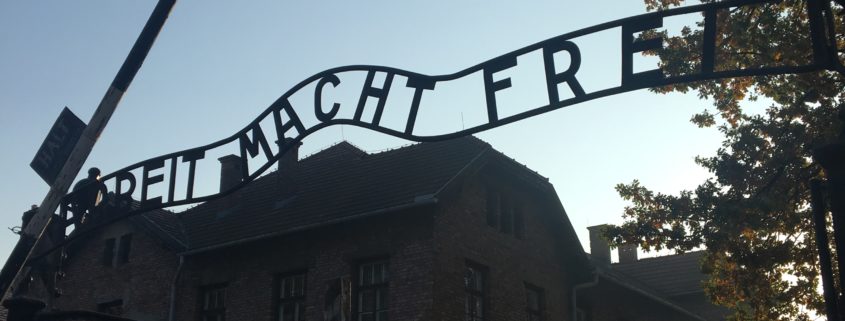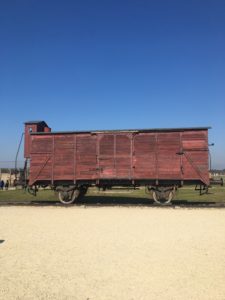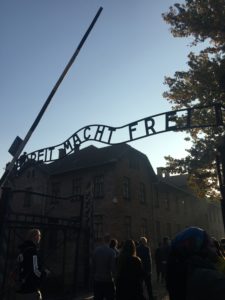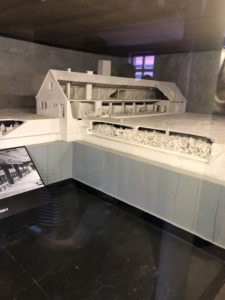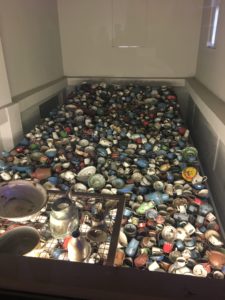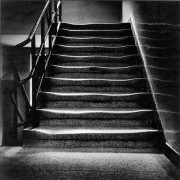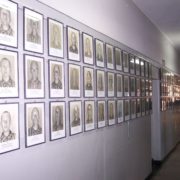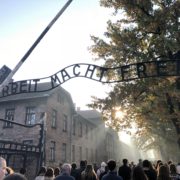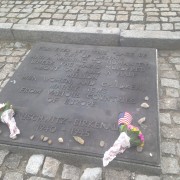Auschwitz-Birkenau: Working in Secret
By Kyra McDermott
In today’s recounting of history, Auschwitz-Birkenau is often at the forefront of Holocaust memory as the best-known concentration and extermination camp from this era. However, Auschwitz-Birkenau operated in secret for years during the Holocaust before any action was taken to liberate the prisoners. Those in charge of the camp made many deliberate decisions to keep their actions secret from the rest of the world, even those who were on their way to be imprisoned or die there.
One of these decisions that helped keep the details of what happened within Auschwitz-Birkenau a secret from the outside world was to not keep death records for any of the victims of the gas chambers. Without a physical record of any killing going on, there was less of a chance that these murders would be discovered. While the decision not to record any of the deaths didn’t shock me, I never actively considered the impact this lack of record keeping would have. The German Nazi regime also decided to place the camp in this specific location in Poland not only because of the high concentration of Jews in Poland, but also because of the ease with which they could hide their crimes.
Along with keeping the camp a secret from the general public, the German Nazis also constructed Auschwitz-Birkenau in a way that mislead the incoming prisoners on its true purpose. For example, as we walked into Auschwitz I, we were greeted by a gate with the words “Arbeit macht frei”, or “Work gives you freedom”. This sign leads those who enter to believe that freedom is a possibility in their future if they work hard, even though most of the people would not survive. Another more startling action was to place fake shower heads in the gas chambers to mislead the victims into thinking they were being given an opportunity to shower after their long train ride. Because the prisoners were so tired and dirty from being trapped in the cattle cars for days, many of them probably welcomed this opportunity to clean themselves. They were told to strip off their clothing and wait in line until their turn to enter the showers, most of them unaware that they would never be allowed to leave alive.
Because the inner operations of Auschwitz-Birkenau were hidden, most of the people who were brought there could assume they would be returning home. Our tour guide pointed out many examples of evidence that some people did not know they would never experience freedom again (examples included objects that people brought with them, such as suits or sunglasses, or shoe shine). They dressed their best and brought belongings that they would not bother bringing if they knew they were going to their deaths. The most obvious example of this for me was the large collection of house keys we saw while touring Auschwitz I. Seeing these keys was difficult because I was forced to think about how I make sure I have my keys with me every time I leave my house to do normal, everyday activities. The
people who died in Auschwitz-Birkenau locked their doors and took their keys with them as if they would be returning home to their families.
Auschwitz-Birkenau was in operation for nearly five years before the Soviets liberated the prisoners, which lead me to believe that no one outside of the inner circle knew the dark details of what went on within those fences. I was therefore shocked to find out during our visit that many large corporations during the time were involved in the funding of the camp. Many companies gave money to keep the camp running because they wanted to use the prisoners for slave labor. While they may have been able to plead ignorance to the mass killings occurring within the camp and claim they only knew about the forced labor, there is no excuse for the textile companies that purchased pounds of hair cut off from the victims’s heads before killing them. The company funding of the camps proves that there were people outside of the immediate operations of the camp that knew what was going on and not only did nothing to stop the killings but supplied money and resources to ensure that it was kept in operation for their own economic benefit.
While touring Auschwitz-Birkenau, the secrecy of the operation was always in the back of my mind. Since learning about the Holocaust for the first time in middle and high school, I always wondered how the Nazis managed to keep the camps running for such long periods of time with no intervention. I now understand that every part of the camp was constructed in a way that hid its true purpose from most of the outside world. I say most of the outside world because there were outsiders who knew what was happening within the camps, particularly the large corporations that funded them. While I previously thought that Auschwitz-Birkenau was able to operate for years because no one knew what was going on there, I now know that there was much more to the story.

